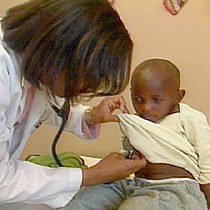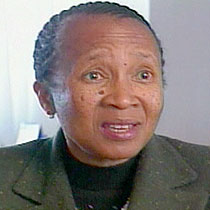2007年VOA标准英语-Africa, Parts of Asia, Face Critical Medical Sh(在线收听)
Washington
06 September 2007
In 2006, the World Health Organization issued a report that a critical shortage of doctors and nurses has contributed to severe health problems in Africa and parts of Asia. The report said at least four million more medical personnel were needed in developing countries around the world. Has anything changed since that report? VOA's Melinda Smith looks at the situation.
 |
| Many countries in Africa have a severe shortage of nurses and doctors |
Many of those children are sick with HIV or dying of AIDS.
A group of American doctors from Baylor College of Medicine in Texas are in Lesotho to alleviate the shortage of nurses and doctors. In the meantime, mothers of sick babies step in to help give the medicine.
 |
| Motloheloa Phooko, Lesotho's Minister of Health |
One of the doctors from Baylor is Dr. Lineo Thahane. She is working at a clinic that Baylor established almost two years ago. She and the other doctors are trying to treat as many patients as they can, while training local doctors and nurses at the time. "We have the medications. They are distributed throughout the country. What we need is people who are comfortable administering those medications to children."
There are some success stories. One of them is two-year-old Lebohang Sekeleoane. While he is HIV positive, he has returned home and is doing well.
Another pediatrician from Baylor, Dr. Tony Garcia-Prats, is looking forward to the day when the foreign doctors will no longer be needed. "African doctors and nurses can take care of kids well. That is sort of our future goal, and training is a huge part of what we do."
The World Health Organization report called for a boost in the health care budgets of many of these countries -- from a yearly average of $33 spent per person to $43 per person. The WHO says spending more for basic medical care is a good incentive for local doctors to stay.